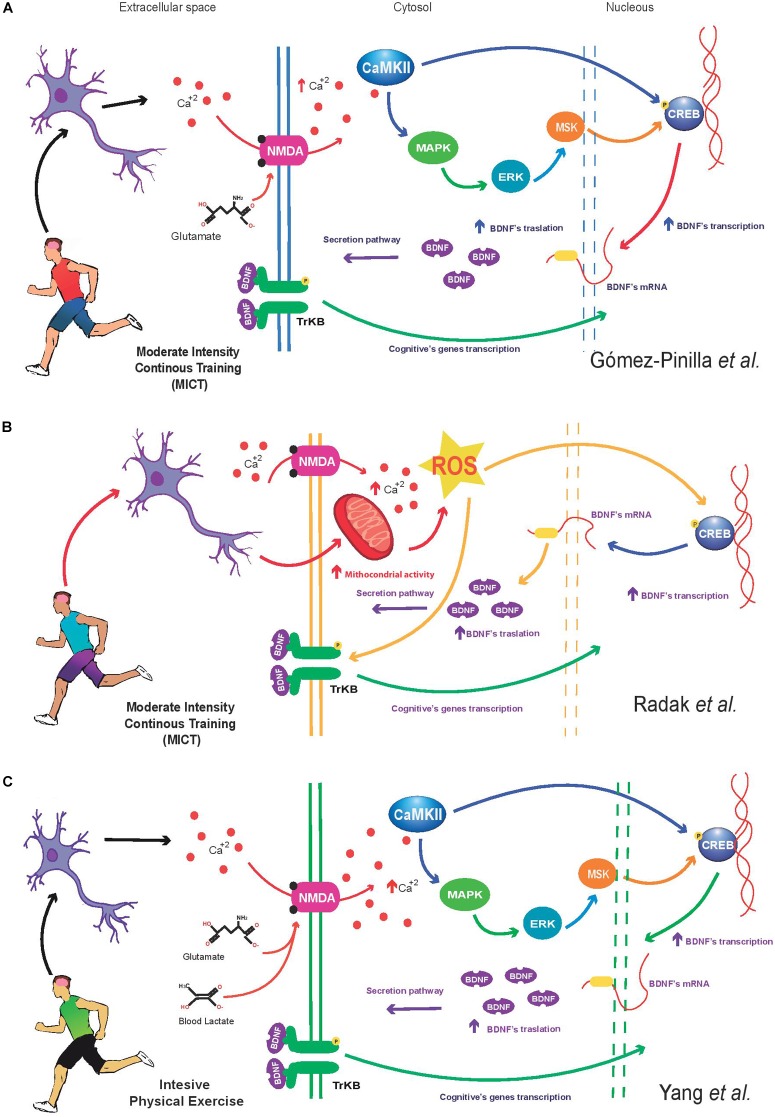FIGURE 1.
(A) Moderate-intensity continuous training (MICT) increases intracellular calcium (Ca2+) levels in neurons through the NMDA receptor. Intracellular Ca2+ increases the activity of calmodulin dependent kinase II (CaMKII), triggering the activation of the MAPK/ERK/MSK cascade signaling, resulting in the increase of the expression and phosphorylation of cAMP response element-binding protein (CREB). Finally, CREB enhance the Bdnf transcription. This molecular mechanism described above result in a higher BDNF protein, the neurotrophin is released by the neuron to induce transcription of cognitive genes. The present model is based on Gomez-Pinilla’s studies (Fernandes et al., 2017). (B) MICT enhances the mitochondrial activity in neurons. Higher mitochondrial activity increases reactive oxygen species (ROS) from complexes I and III. The change in ROS levels modify and regulate a wide of signaling process including the CREB-BDNF signaling pathway. Once activated, BDNF regulates a positive feedback mechanism to induce the cognitive genes transcription. Additionally, the aerobic exercise increases the calcium concentration in neurons; this ion through the calpain and xanthine oxidase increases the ROS that consequently increase the CREB’s activation and Bdnf expression. (C) Exercise performed at high intensity (≥80% HRmax) activates several metabolic pathways in muscle (including glycolysis), this condition generates a higher systemic blood lactate concentration reaching the brain, this metabolite can be oxidized by astrocytes or neurons to produce glucose (Dienel and Hertz, 2001). In addition, experimental evidence indicates that lactate increase NMDA activity and intracellular Ca2+ levels in neurons. Indeed, it is possible that the lactate in neurons enhance the CaMKII activity and the MAPK/ERK/MSK signaling to induce the CREB’s activation and Bdnf expression. Finally, the BDNF activate a positive loop to induce the expression of cognitive genes (Yang J. et al., 2014).

